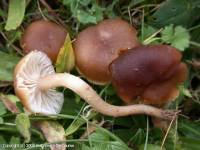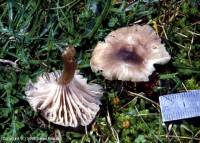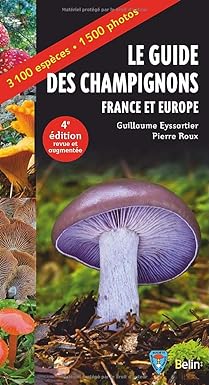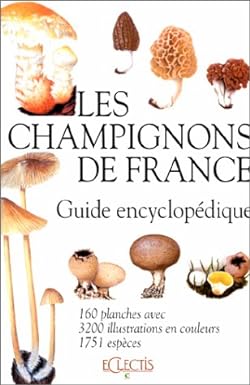
Il y a 2 champignons qui correspondent à votre recherche par ordre de popularité :
| Cuphophyllus colemannianus (A. Bloxam) Bon (1985) [1984] |

|
Noms francais : Hygrophore de Coleman Synonymes : Hygrophorus colemannianus A. Bloxam (1854), in Berkeley & Broome, The annals and magazine of natural history, series 2, 13, p. 403 (Basionyme) Camarophyllus colemannianus (A. Bloxam) Ricken (1918), Vademecum fur pilzfreunde, Edn 1, p. 188 Hygrophorus subradiatus ss. Kuhner & Romagnesi (1953), Flore analytique des champignons superieurs, p. 54 (nom. inval.) Camarophyllus rickenii E. Horak (1963), Mitteilungen der schweizerische Anstalt fur das forstliche versuchswesen, 39, p. 59 Hygrocybe colemanniana (A. Bloxam) P.D. Orton & Watling (1969), Notes from the royal botanic Garden, Edinburgh, 29(1), p. 131 Cuphophyllus colemannianus (A. Bloxam) Bon (1985) [1984], Documents mycologiques, 14(56), p. 11 (nom actuel) References : Bon p. 103 ; CD 179-194, 100 ; BK 3 84 Groupe : Hygrophores Classification : Basidiomycota / Agaricomycetes / Agaricales / Hygrophoraceae Comestibilite : Sans interet |
| Cuphophyllus subviolaceus (Peck) Bon (1985) [1984] |

|
Noms francais : Hygrophore presque violet Synonymes : Hygrophorus subviolaceus Peck (1901) [1900], Annual Report of the New York State Museum of Natural History, 53, p. 842, tab. C, fig. 11-15 (Basionyme) Hygrophorus colemannianus ss. Ricken (1915), Die Blatterplize, p. 18, pl. 7, fig. 5 Camarophyllus subviolaceus (Peck) Singer (1951) [1949], Lilloa, 22, p. 148 Hygrocybe subviolacea (Peck) P.D. Orton & Watling (1969), Notes from the royal botanic Garden, Edinburgh, 29(1), p. 32 Cuphophyllus subviolaceus (Peck) Bon (1985) [1984], Documents mycologiques, 14(56), p. 11 (nom actuel) References : DM 56 p. 11 ; FE 6 p. 242 ; Bon p. 103 Groupe : Hygrophores Classification : Basidiomycota / Agaricomycetes / Agaricales / Hygrophoraceae Comestibilite : Sans interet Commentaires : Il existe une f. bisporique, a hyphes non bouclees, en montagne (DM HS 1, p.30) |

Pour vous accompagner lors de vos sorties mycologiques, MycoDB vous recommande les guides suivants :

